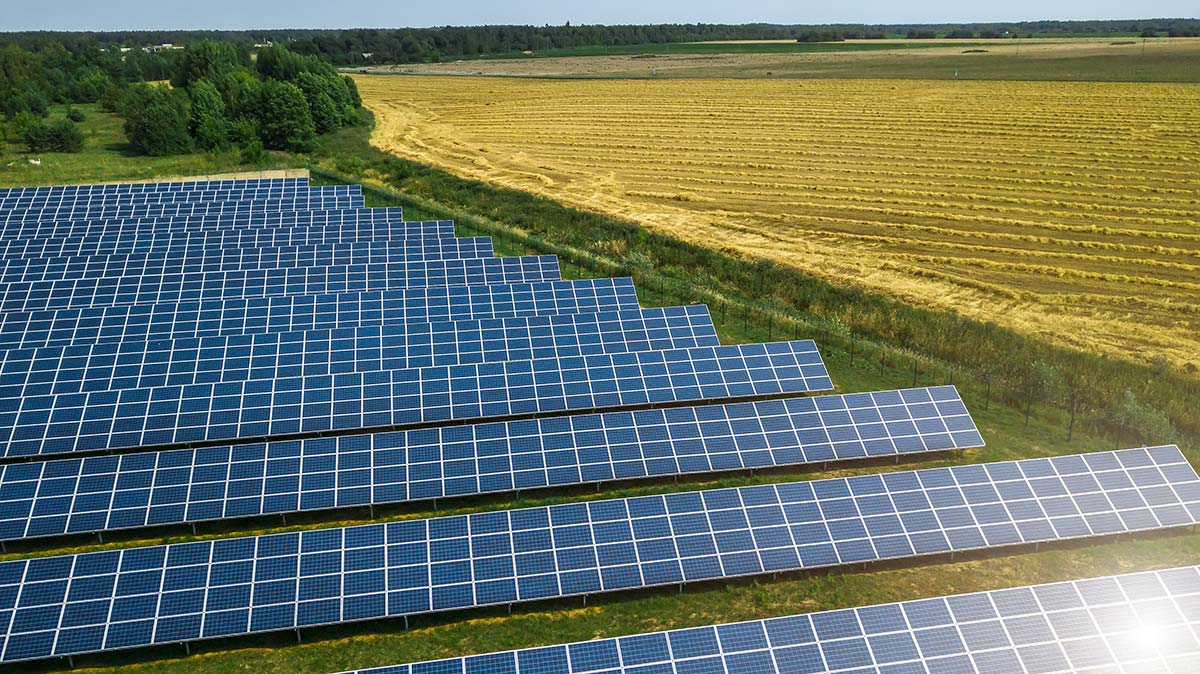Rural electric co-operatives seeking federal grant and loan support for renewable and clean energy projects must compete against each other under a $9.7 billion U.S. Department of Agriculture (USDA) program, said Chris McLean, Assistant Administrator of USDA’s Rural Utilities Service, during a webinar. The Rural Utilities Service is in charge of the program, known as New ERA.
The program seeks to achieve the “greatest reduction in CO2, methane and nitrous oxide emissions,” McLean said, quoting from the Inflation Reduction Act’s section 22004 that created the program. In selecting grantees, the program will evaluate the emissions reductions proposed by rural co-ops in their applications, as co-ops compete against other co-ops of similar size.
To enable the comparison across co-ops, a key part of a co-op’s preliminary application for grant and loan support is its calculation of the emissions reductions that its project, or portfolio of projects, will achieve. To ensure that each co-op calculates emissions reductions in the same way, USDA has provided a spreadsheet workbook called the Achievable Reduction Tool, and has created four template versions to reflect four possible types of applications.
Rural electric co-ops may apply for grant and loan support to purchase renewable energy, renewable systems, zero-emission, carbon capture and storage systems. A grant may cover no more than 25% of the project cost, while a low-interest loan may cover the rest.
Beyond reducing emissions, proposed projects will be evaluated based on customer benefit in terms of lower costs for customers, the project cost per unit of greenhouse gas reductions, project costs relative to program funding, and the geographic distribution of all projects, McLean said.
The application window for a preliminary application, known as a letter of interest, will be open from July 31 through August 31. USDA plans to make available a template letter of interest on the program’s website, and to offer webinars describing the electronic submission process.
Detailed information on the program’s application requirements is provided in a notice of funding opportunity. USDA has also provided answers to frequently asked questions. The Department plans to make available a recording of the webinar on its website next week.
“One of the reasons we’re able to operate our loan program at a very affordable rate for our U.S. taxpayers,” said McLean, is that the Rural Utilities Service has “a really strong repayment record. And that’s partly backed by the strong collateral that we have behind our loans.”
McLean said that loan amounts could be made available upfront with system financing, in which a co-op uses the collateral of its existing system—an approach that USDA has used since the 1930s. Or a co-op could use a completed project as collateral for a USDA loan, after building the project using funding from an interim financer. USDA will also consider “stranded asset refinancing—the ability to release funds in order to create those resources that you need to invest in new, eligible clean energy sources,” McLean said.
USDA plans to invite, from October to November, “competitive” preliminary applicants to file a full application. Awards from the New ERA program will be made from December 2023 through December 2026, and all funds will be disbursed by September 30, 2031.
This content is protected by copyright and may not be reused. If you want to cooperate with us and would like to reuse some of our content, please contact: editors@pv-magazine.com.








By submitting this form you agree to pv magazine using your data for the purposes of publishing your comment.
Your personal data will only be disclosed or otherwise transmitted to third parties for the purposes of spam filtering or if this is necessary for technical maintenance of the website. Any other transfer to third parties will not take place unless this is justified on the basis of applicable data protection regulations or if pv magazine is legally obliged to do so.
You may revoke this consent at any time with effect for the future, in which case your personal data will be deleted immediately. Otherwise, your data will be deleted if pv magazine has processed your request or the purpose of data storage is fulfilled.
Further information on data privacy can be found in our Data Protection Policy.